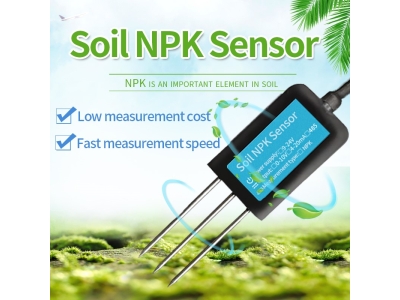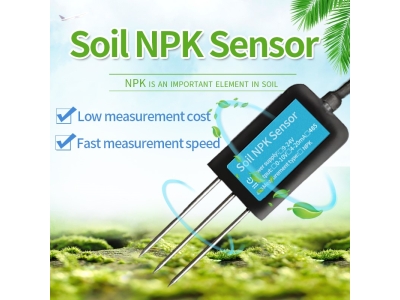Sustainable agriculture is an approach to farming that focuses on producing food in a way that is environmentally and socially responsible. One of the key technologies used in sustainable agriculture is soil sensors. In this article, we will explore the role of soil sensors in sustainable agriculture.

What is Sustainable Agriculture?
Sustainable agriculture is a farming approach that aims to produce food in a way that is environmentally and socially responsible. This approach involves using farming practices that are regenerative, rather than depleting, to the soil and other natural resources. Sustainable agriculture can help to reduce the environmental impact of farming, while also improving the economic and social well-being of farmers and their communities.
What are Soil Sensors?
Soil sensors are devices that are used to measure soil moisture, temperature, and other factors that affect plant growth. These sensors can be placed in the soil at different depths to provide accurate data on soil conditions. The data can then be used to optimize irrigation schedules, fertilizer applications, and other farming practices.
Benefits of Soil Sensors in Sustainable Agriculture
Soil sensors offer several benefits for farmers practicing sustainable agriculture, including:
Improved Water Efficiency: Soil sensors can help farmers optimize irrigation schedules and deliver water precisely when and where it is needed. This can reduce water waste and improve water efficiency.
Increased Crop Yields: By providing real-time data on soil moisture and other factors, soil sensors can help farmers optimize crop growth and increase yields.
Reduced Fertilizer Use: Soil sensors can help farmers determine the optimal amount of fertilizer to apply to their crops. This can reduce fertilizer use and save money, while also reducing the environmental impact of farming.
Better Soil Health: By providing accurate data on soil conditions, soil sensors can help farmers identify soil health issues and take corrective action. This can help to improve the long-term sustainability of farming practices.
Lower Costs: By optimizing irrigation schedules, reducing fertilizer use, and improving crop yields, soil sensors can help farmers save money on irrigation and fertilizer costs.
Challenges of Soil Sensors in Sustainable Agriculture
While soil sensors offer many benefits, there are also challenges to their implementation in sustainable agriculture. One of the main challenges is cost. Soil sensors can be expensive to install and maintain, especially for small-scale farmers. In addition, these sensors require a certain level of technical expertise to operate and maintain, which may be a barrier for some farmers.
Another challenge is the need for reliable connectivity and data management. Soil sensors generate large amounts of data, which must be transmitted and analyzed in real-time. This requires reliable connectivity and robust data management systems, which may not be available in all agricultural settings.
Conclusion
Soil sensors play an important role in sustainable agriculture. By using soil sensors to collect accurate data on soil conditions, farmers can optimize irrigation schedules, fertilizer applications, and other farming practices. This can help to increase crop yields, reduce waste, and improve the sustainability of farming practices. While there are challenges to their implementation, the potential benefits of soil sensors in sustainable agriculture are significant. By adopting these technologies, farmers can help to feed the world's population while protecting the environment and their bottom line.






